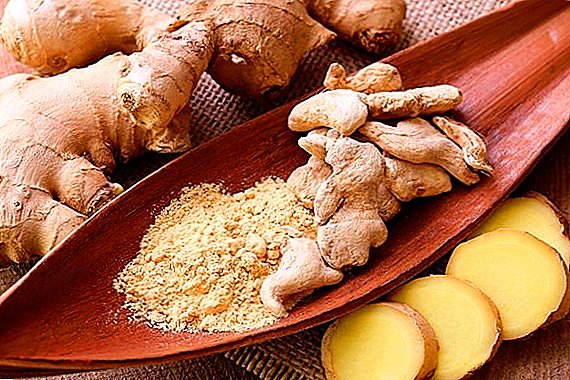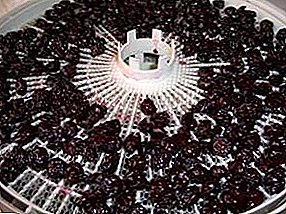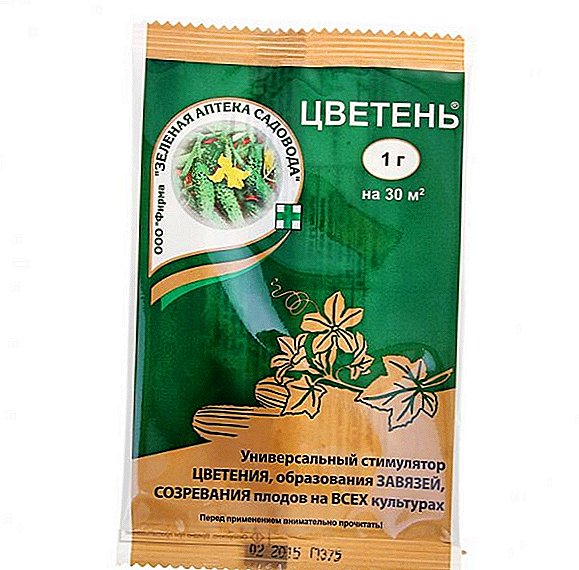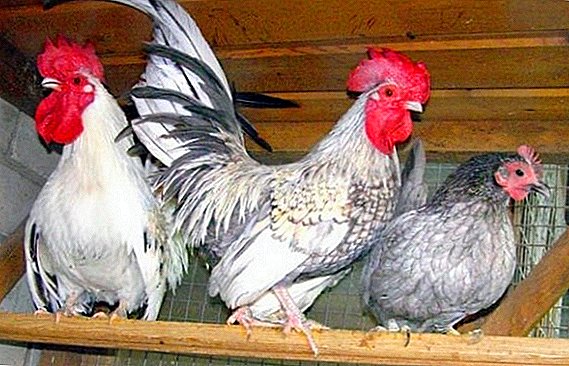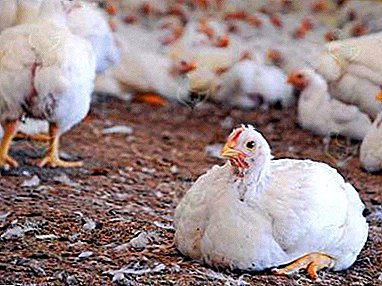
The content of broiler chickens at home is gaining more and more popularity. This is not only tasty and healthy meat, eggs, but also a great idea for business.
For the birds to grow and develop well, first of all, it is necessary to ensure proper feeding. What should it be? In addition, for this type of chickens requires special and proper care. Answers to these and other questions can be found in our article.
Briefly about the content at home
Keeping broiler chickens at home is much more profitable. Unlike laying hens, they will not need roosting, they will not need to worry about weatherization. The life of a broiler is about 80 days, it is impractical to keep it further, since the growth rate falls and the feed consumption increases. But this is only with an extensive method of growing.
With the intensive method, young animals are bought in small batches every 3-4 months. Therefore, year-round maintenance is more troublesome, as it requires certain conditions for the house.
Features of the diet
To grow a fleshy and strong livestock, you need to adhere to a certain structure of feeding. The optimal feeding scheme is as follows:
 Prestart
Prestart- Start.
- Fattening
- The finish.
It is also very important to respect the ratio of water and feed. For broiler chickens, it should be 1.7 to 1. Water should be served only clean and fresh, with a temperature of about 18-22 degrees.
When feeding, an important role is played by the structure of the feed. In this question, the guide is the age of birds. At different stages of growth and development, the broiler intestine is able to digest certain foods:
- Up to 10 days - croup in sifted form (microgranules are permissible).
- From 11 to 24 days - granulated feed (diameter 2-3.5 millimeters), coarse ground.
- From day 25 until slaughter - granulated feed (3.5 millimeters), coarse ground.
The most rapid increase in meat can be achieved when feeding with feed.
Table. Average daily increase and feed consumption by age category.
| Prestart | Start | Fattening | The finish | |
| Age in days | 0-5 | 6-18 | 19-37 | 38-42 |
| Gain in grams | 15 | 33 | 54 | 56 |
| Feed rate in grams | 15-21 | 25-89 | 93-128 | 160-169 |
Chicken Feeding
Feeding should be complete and balanced from the first days of a chicken's life. If a kid cannot peck on his own, he should be helped by resorting to a pipette. Feeding scheme:
 From 1 to 10 day - feed the chickens every 2 hours. The diet includes boiled eggs, milk and cottage cheese. On the fifth day of life, the egg can be mixed with chopped egg shells.
From 1 to 10 day - feed the chickens every 2 hours. The diet includes boiled eggs, milk and cottage cheese. On the fifth day of life, the egg can be mixed with chopped egg shells.- From 10th day cereal crops are introduced. The mixture is as follows: corn grits - 50%, crushed wheat - 25%, barley flour - 10%, oatmeal - 5%. It is very important to add nettle to the feed (10%), only it is first boiled over and boiled.
- From 15th day You can give grated carrots, boiled meat, chopped greens. Also at this stage chalk, gravel, shell and bone meal are injected.
- From the 20th day the feed is almost identical to that of an adult broiler.
IMPORTANT! Lack of water at an early age will lead to dehydration of chickens. The disease requires immediate treatment.
Meal frequency
How often to feed broilers depends on the following indicators:
- With what speed the bird grows.
- How much feed per day she can eat.
- For what period of time broilers should gain weight.
Most often the feeding scheme is as follows:
- From 1 to 7 days of life - feeding is carried out 8 times a day. During this period, adaptation occurs, the organism as a whole is formed.
- From 7 to 14 days of life - feeding is carried out 6 times a day. This week is formed the backbone, body weight is rapidly going up.
- From 14 to 21 days - 3 feedings per day is enough.
- From 21 days - feeding 2 times a day.
Dry food or wet mash?
For active weight gain, it is necessary to introduce both dry type feed and wet mash into the broiler ration.
Let's see what each feed is:
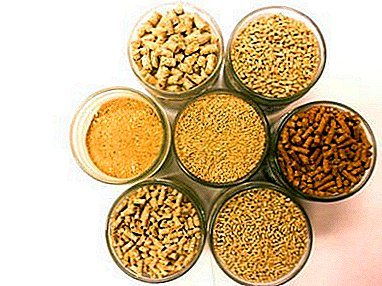 Dry feed - loose mixture in granules.
Dry feed - loose mixture in granules.- Wet feed (mash) - concentrated feed, which is kneaded with whey or milk, meat broth. The kneading is done with the expectation of a kilogram of dry feed 500 grams of humidifier.
- Combined feeding - the method is to give alternately dry and wet food. Such feeding will be optimal.
Dry food can be in the feeders throughout the day. Mixers give twice a day.
Feed your own hands
Feed plays an important role in feeding, it not only promotes weight gain, but also improves egg production. For, to cook the feed at home with your own hands, you will need:
- Mandatory corn - 450 grams.
- Wheat - 120 grams.
- Barley - 70 grams.
- Sunflower meal - 70 grams.
- Chalk - 70 grams.
- Meat and bone meal - 60 grams.
- Fish meal - 50 grams.
- Nutrient yeast - 40 grams.
- Juicy green grass (grass flour) - 30 grams.
- Peas - 20 grams.
- Vitamin complex - 10 grams.
- Salt - 3 grams.
Example of finishing feed in percentage:
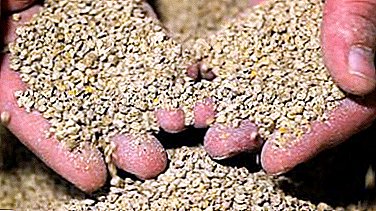 Corn - 45%.
Corn - 45%.- Wheat - 15%.
- Barley - 15%.
- Makukha - 15%.
- Meat and bone meal or fish meal - 5%.
- Nutrient yeast - 5%.
- Juicy greens - 5%.
- Chalk - 5%.
- Vitamin complex - 5%.
Exceptions
When feeding broilers, the following products should be avoided:
- Beet. It has a laxative effect.
- Products that are amenable to fermentation.
- Soaked bread.
- Meat and sausage.
- Products that include cocoa.
- Cheese (any kind).
- New milk.
- Prohibited too fine sand.
Potatoes can be included in the diet, but only in combination with other products, you can not give it yourself. Also it concerns sunflower and butter.
IMPORTANT! Do not give spoiled food to birds.
Feeding broilers at home is not as difficult as it may seem at first glance. You just need to follow certain rules. Then a healthy population with a good weight gain is provided for you.


 Prestart
Prestart From 1 to 10 day - feed the chickens every 2 hours. The diet includes boiled eggs, milk and cottage cheese. On the fifth day of life, the egg can be mixed with chopped egg shells.
From 1 to 10 day - feed the chickens every 2 hours. The diet includes boiled eggs, milk and cottage cheese. On the fifth day of life, the egg can be mixed with chopped egg shells. Dry feed - loose mixture in granules.
Dry feed - loose mixture in granules. Corn - 45%.
Corn - 45%.